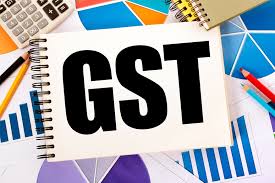An uneven uptick: On GST revenue trends
With gross revenues of ₹1.12-lakh crore in August, the GST has now yielded over ₹1-lakh crore a month for almost a full year. The only blip in the past 11 months came in June, when takings fell below ₹93,000 crore in the aftermath of the second COVID-19 wave that compelled mobility restrictions across States. Those curbs have been progressively easing up — just as they were a year ago when the country saw a phased unlocking from the national lockdown. Compared to those lows, the August collections are 30% higher and also 14% above the pre-pandemic levels of 2019-20, though one must remember India’s growth had stuttered sharply that year. While revenues from domestic transactions were up 27%, key industrial States saw faster growth, including Karnataka, Tamil Nadu and Maharashtra. Going forward, the Government expects such ‘robust’ GST revenues to persist. Most economists agree that may be the case, unless the fears of a third wave come true, triggering lockdowns.
But it is unclear if the economy is recovering ‘fast’ in tandem with the easing out of COVID-related restrictions. The GST collected in August pertains largely to economic activity in July and the mobility restrictions in most States had been eased further that month compared to June, including in the southern States. GST e-way bills generated in July surged to an average of 2.1 million from 1.8 million in June. Yet, on a sequential basis, GST revenues in August are almost 4% lower than the ₹1.16-lakh crore collected in July. This recovery appears choppy rather than ‘fast’. Similarly, the Government’s claims of higher compliance levels reiterated over the past several months need to be matched with accompanying numbers. At the start of the GST regime four years ago, it had 6.6 million taxpayers. On GST Day this July, the Finance Minister said this had risen to 12.8 million. But how many of them are filing returns each month is no longer known since the Government stopped disclosing that number from February 2021. This makes it virtually impossible to distil the effects of compliance and growth on GST revenues. Deviating from standard data points spikes suspicions about what they strive to hide. The Government would do well to restore and enhance its quality of data disclosures — even State-wise revenues have been selectively shared recently. As the Reserve Bank of India Governor has highlighted, the economy is still delicately poised — manufacturing recovery has stumbled in August, services remain stressed, exports stay strong but have slipped on a month-on-month basis just like GST collections. There is surely a need to talk things up when the chips are down, but ultimately only facts and figures can invest words with meaning.
Download our App to get knowledge updates: https://play.google.com/store/apps/details?id=com.app.gstmitra
::
Join Our Telegram Channel for more updates:https://t.me/praveengst



Comments
Post a Comment